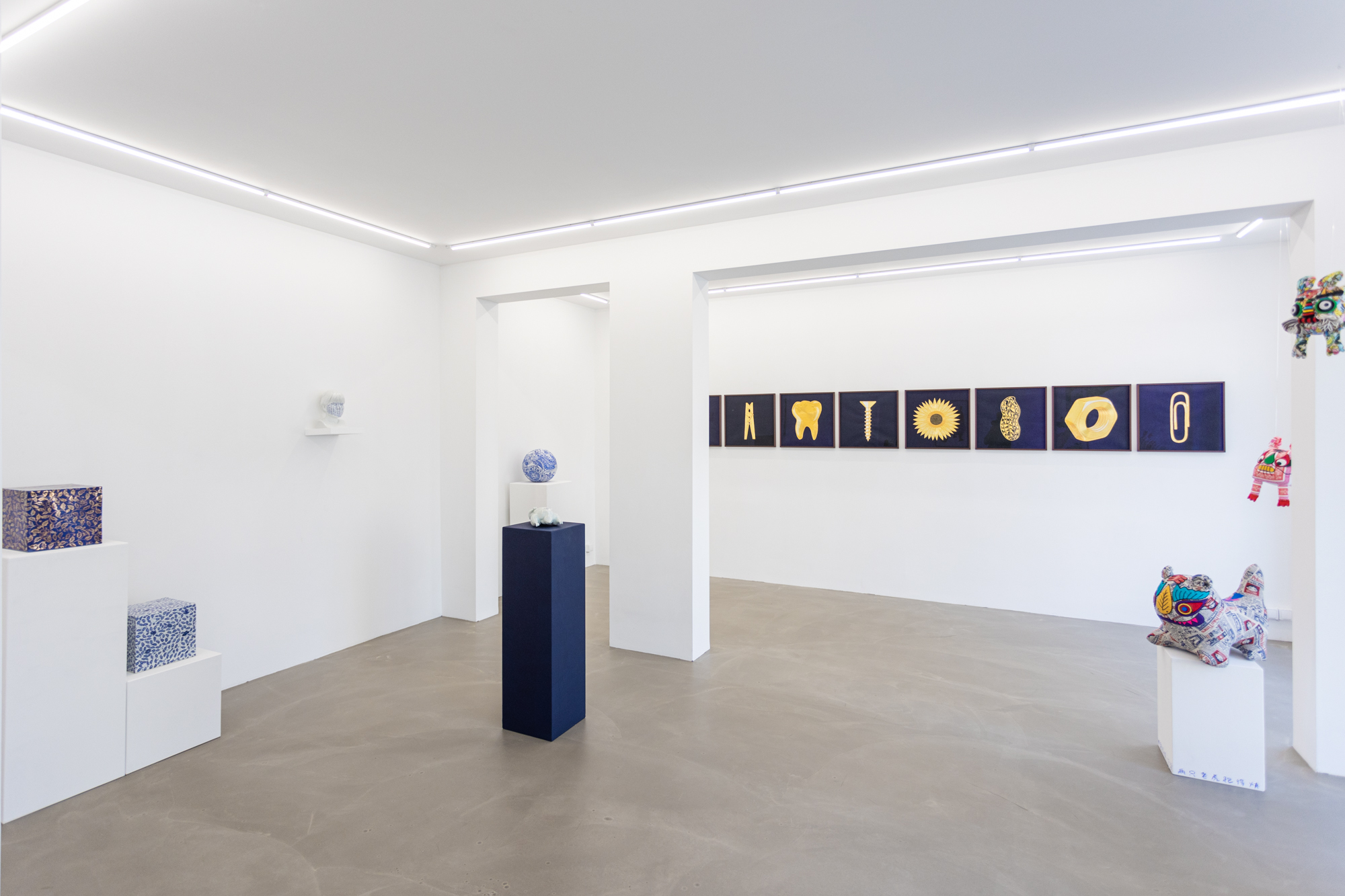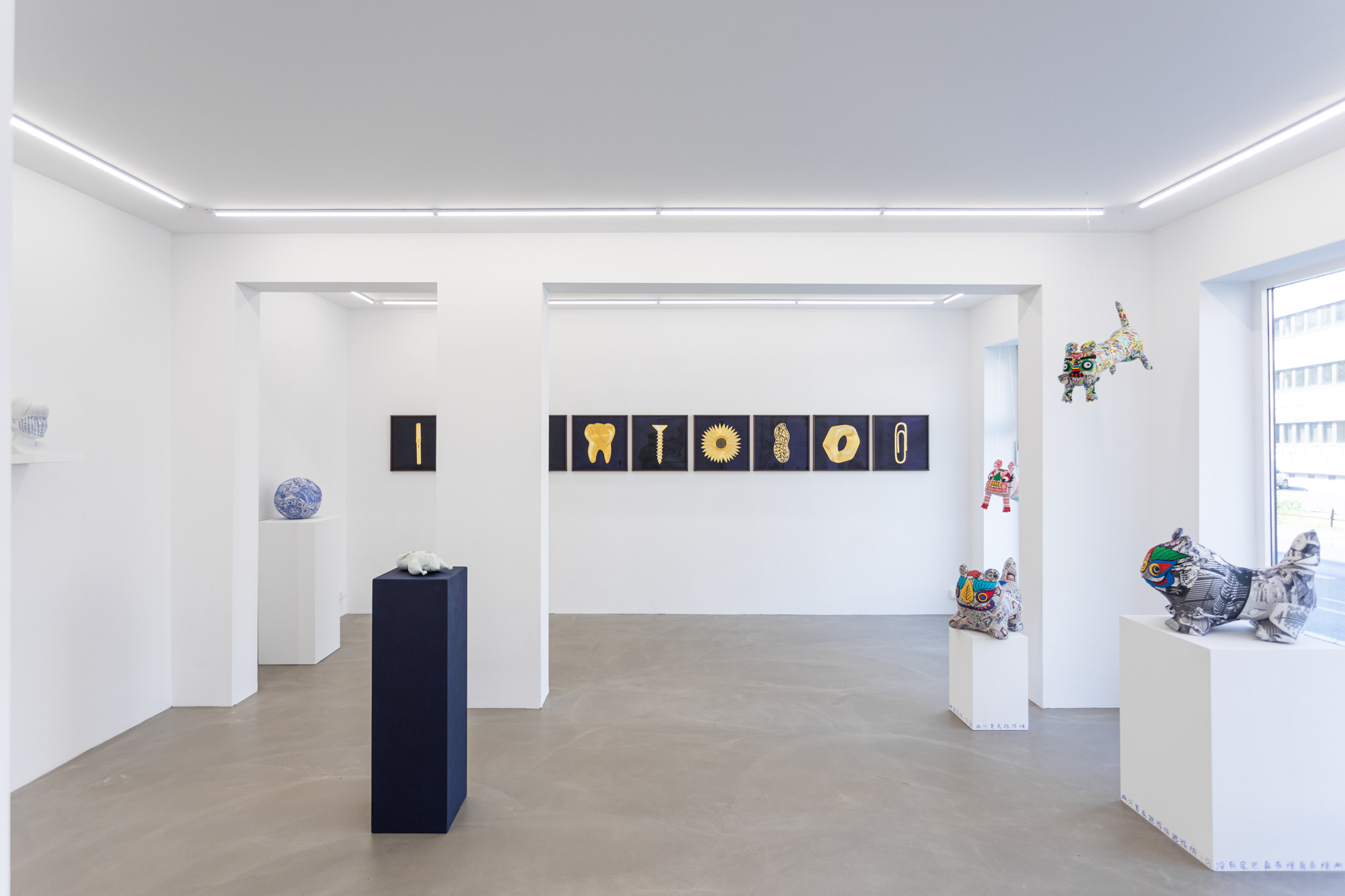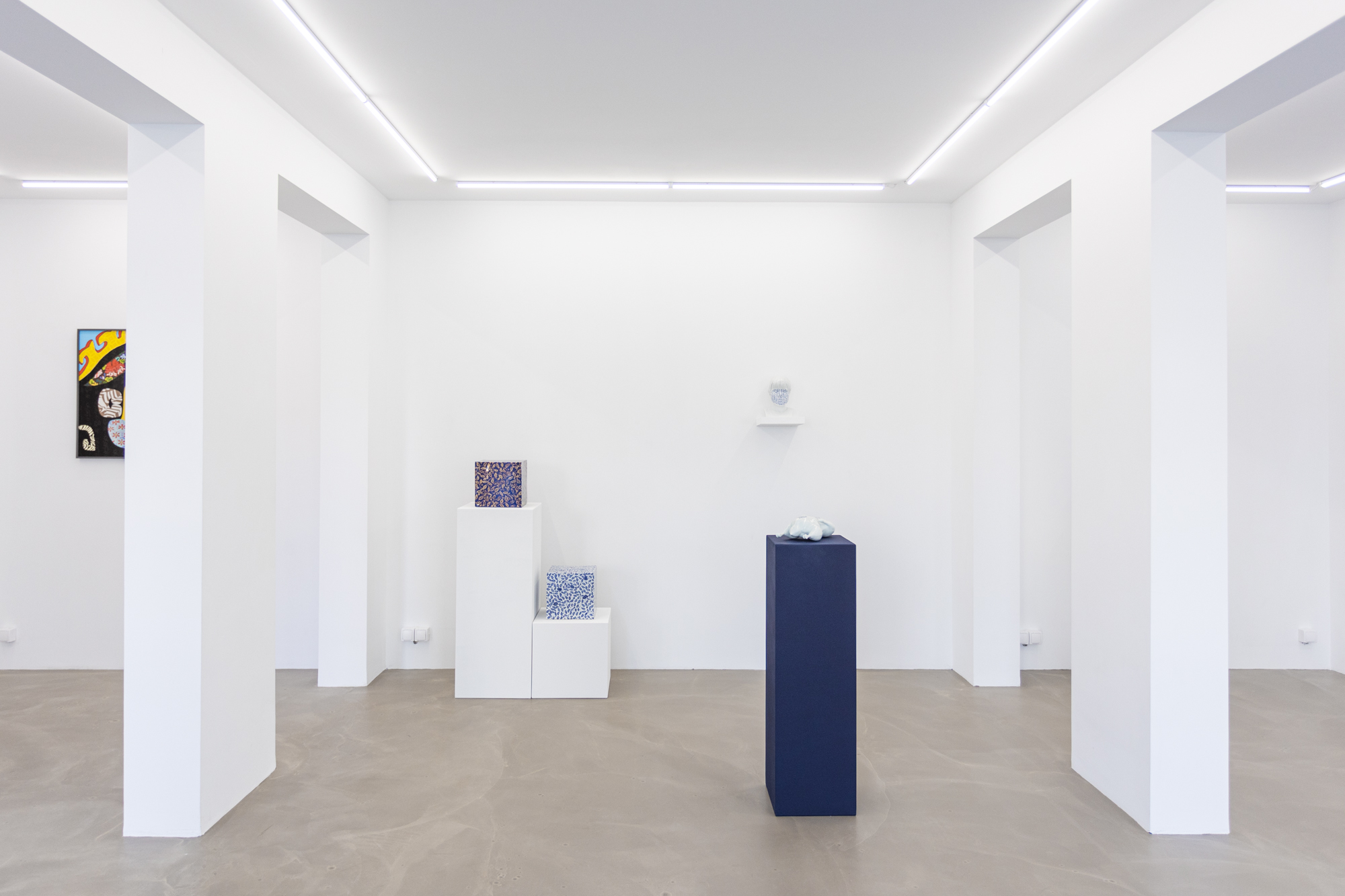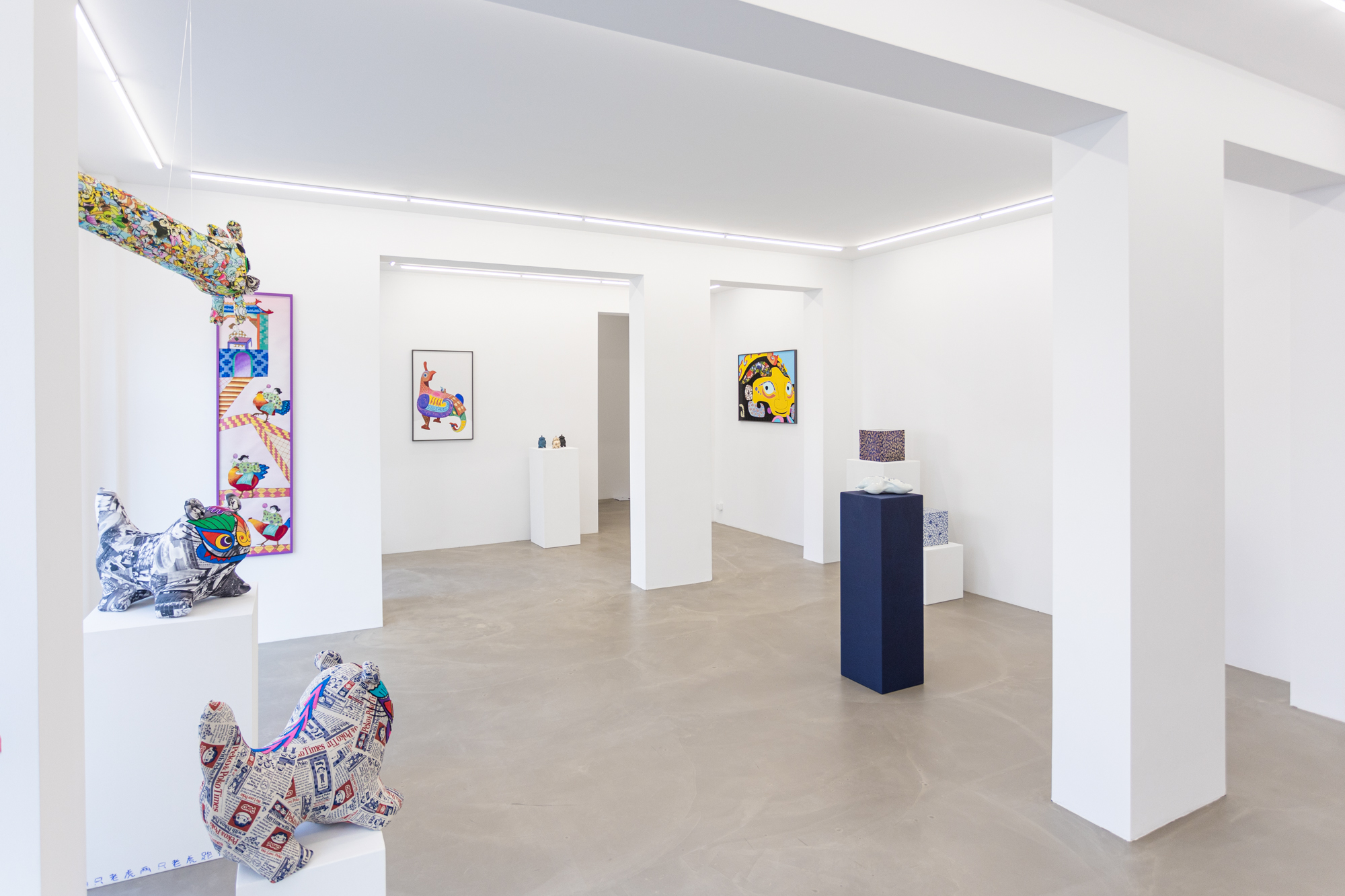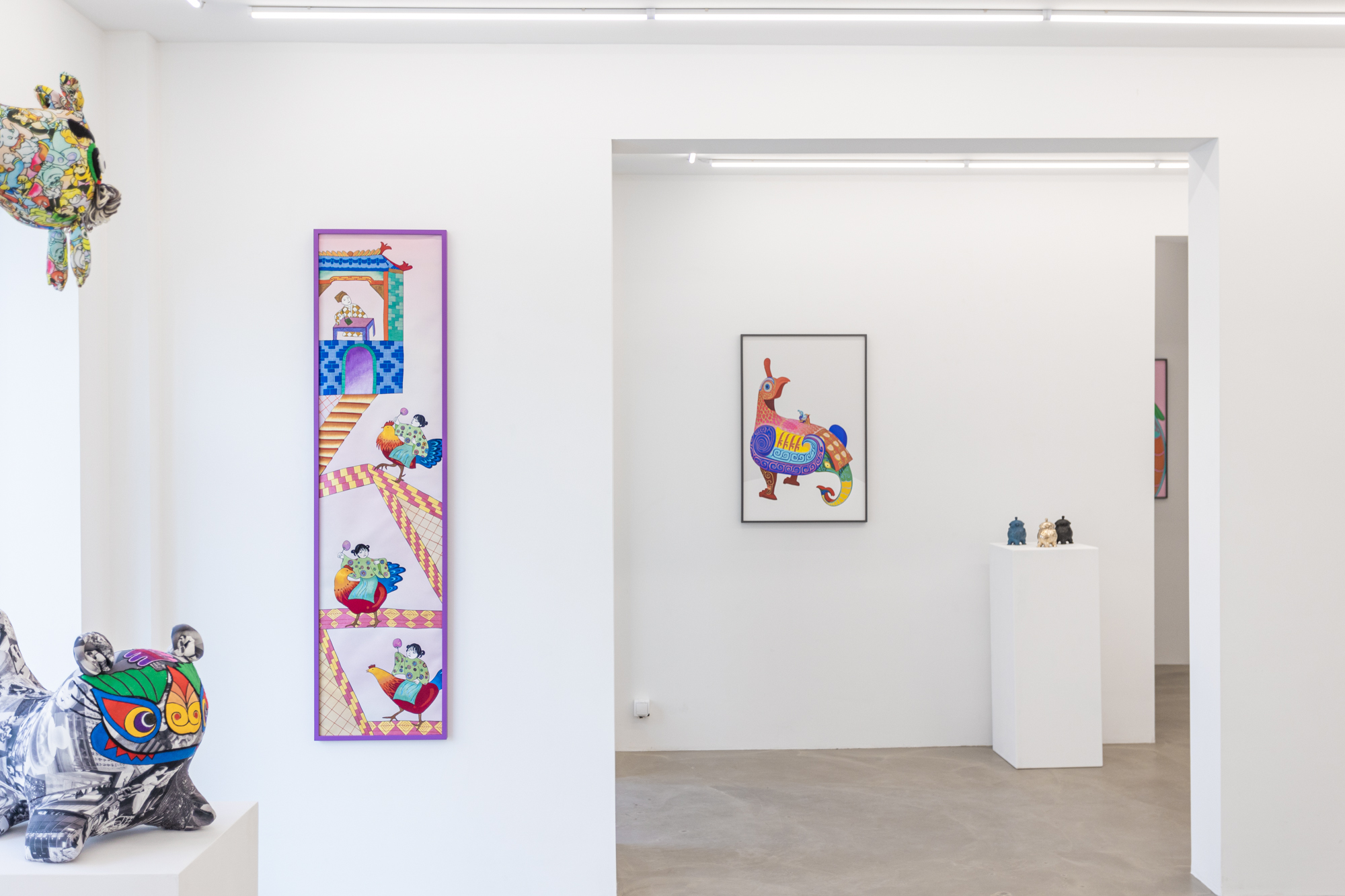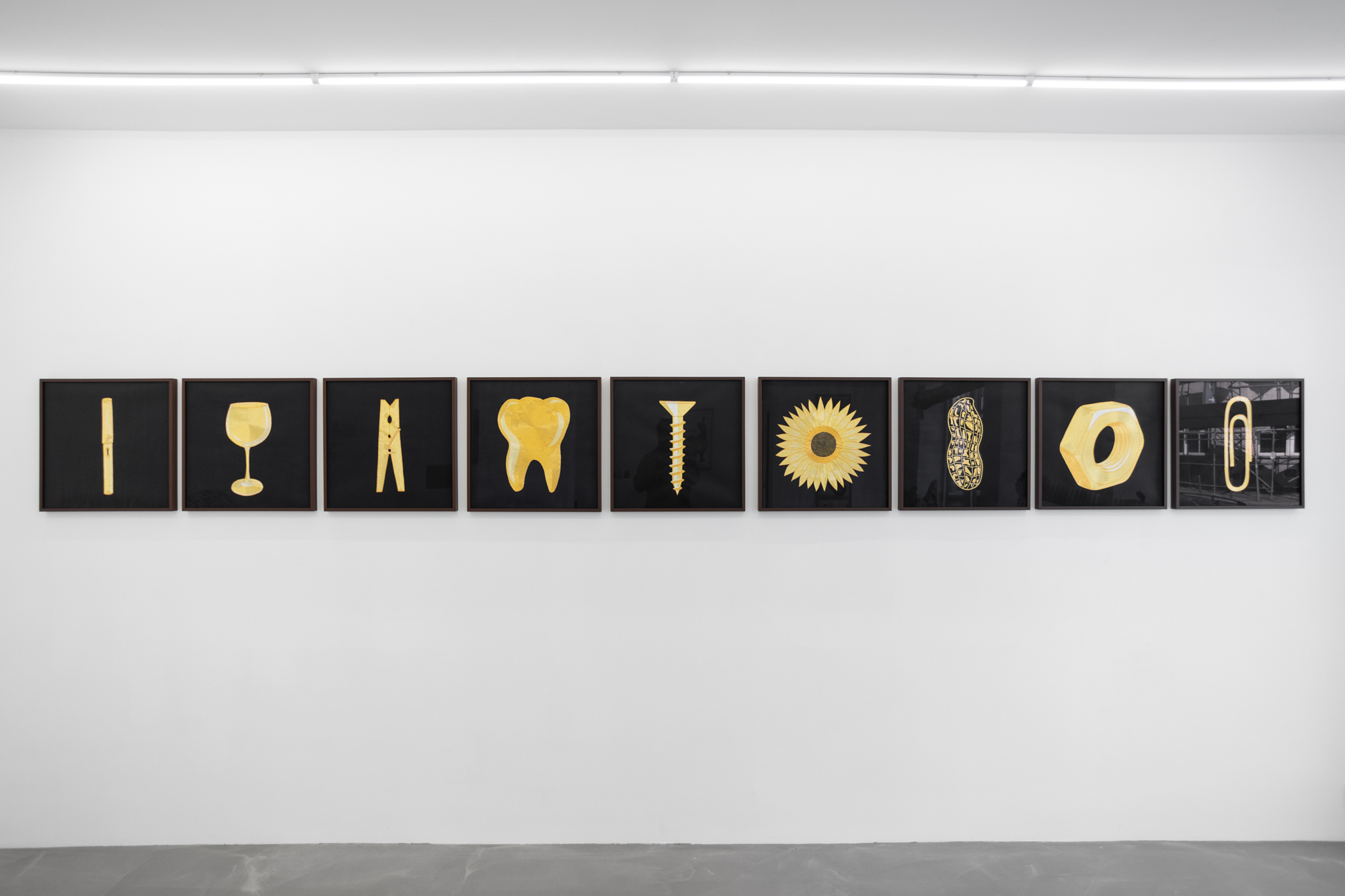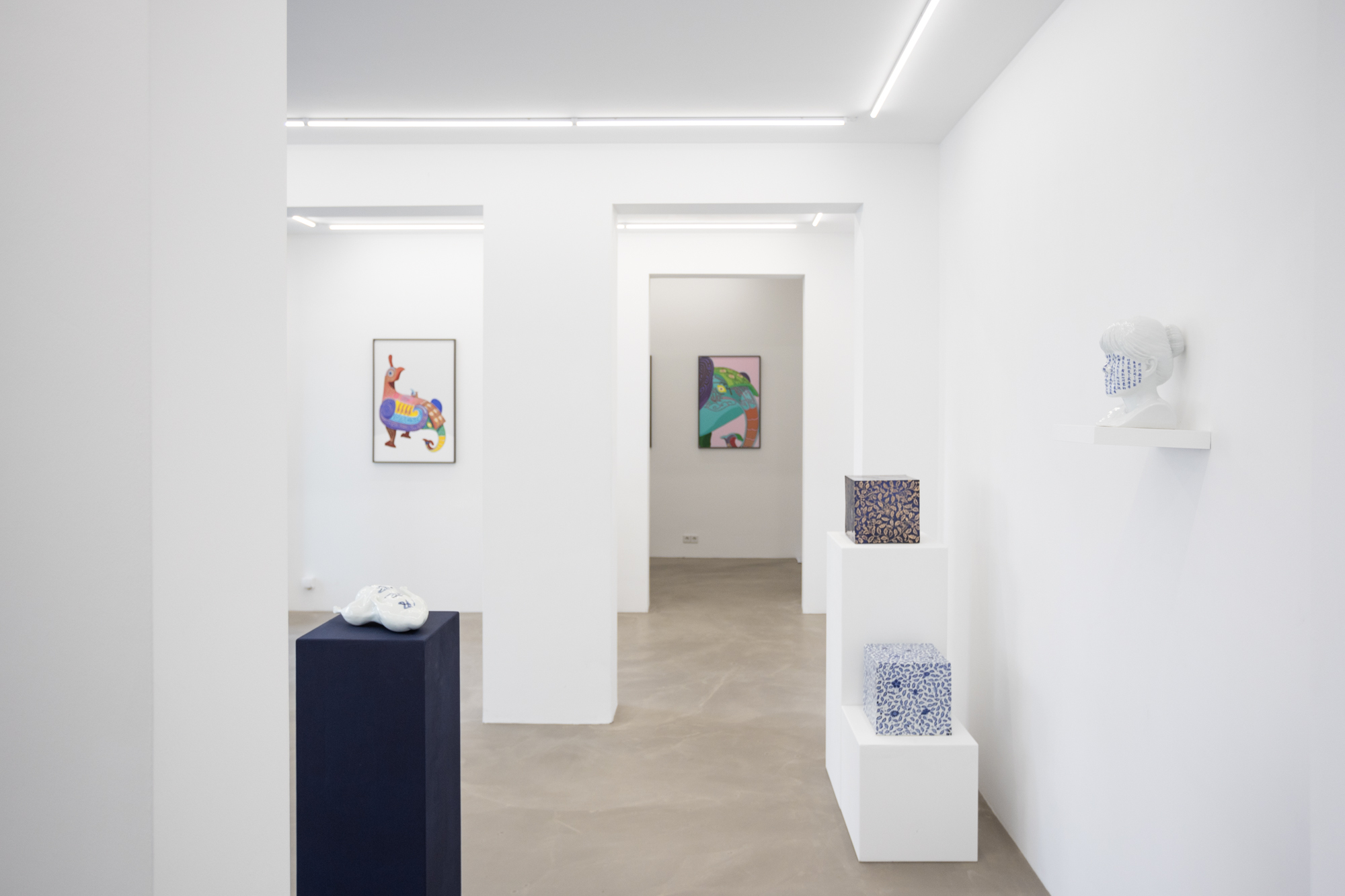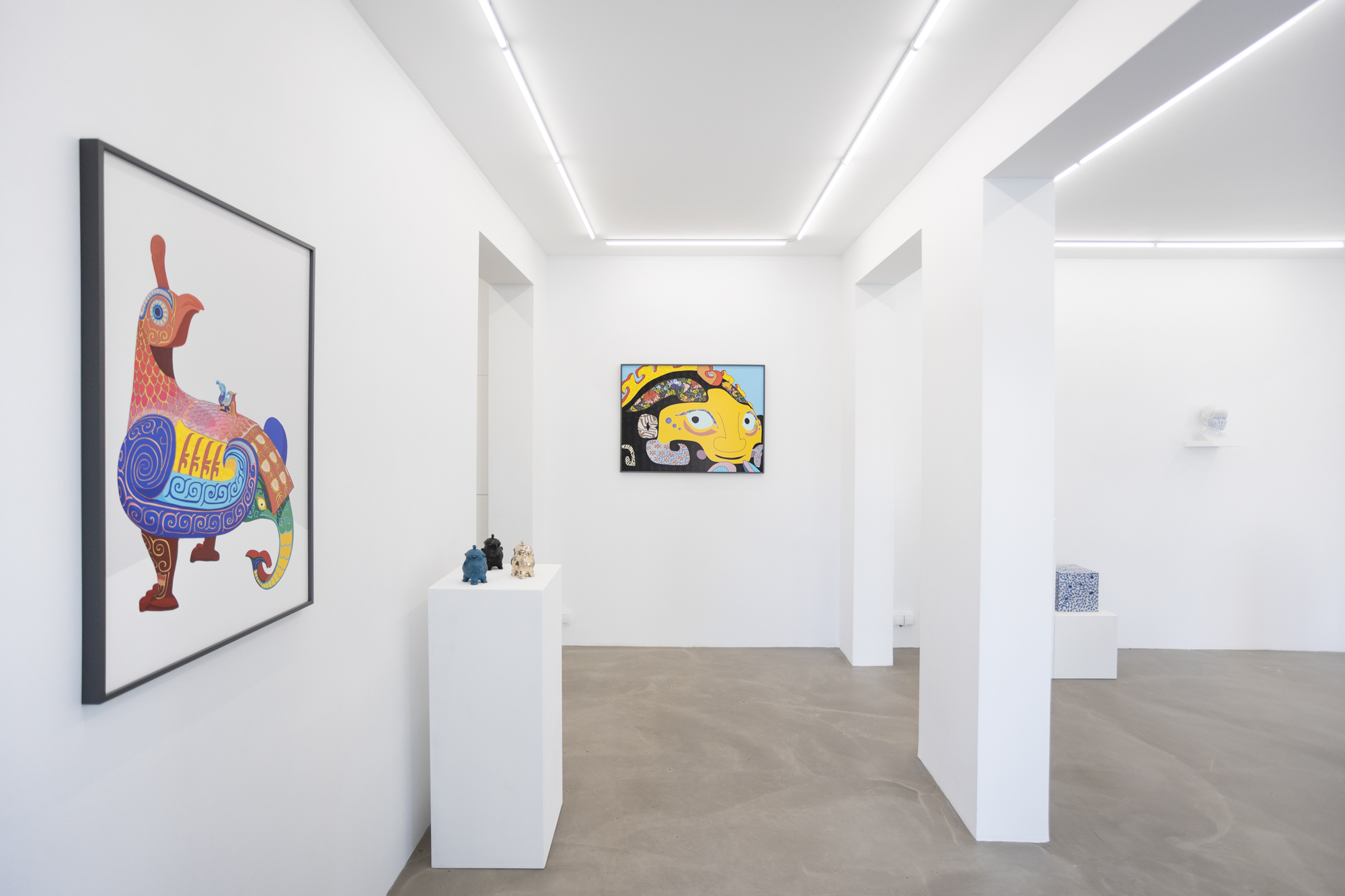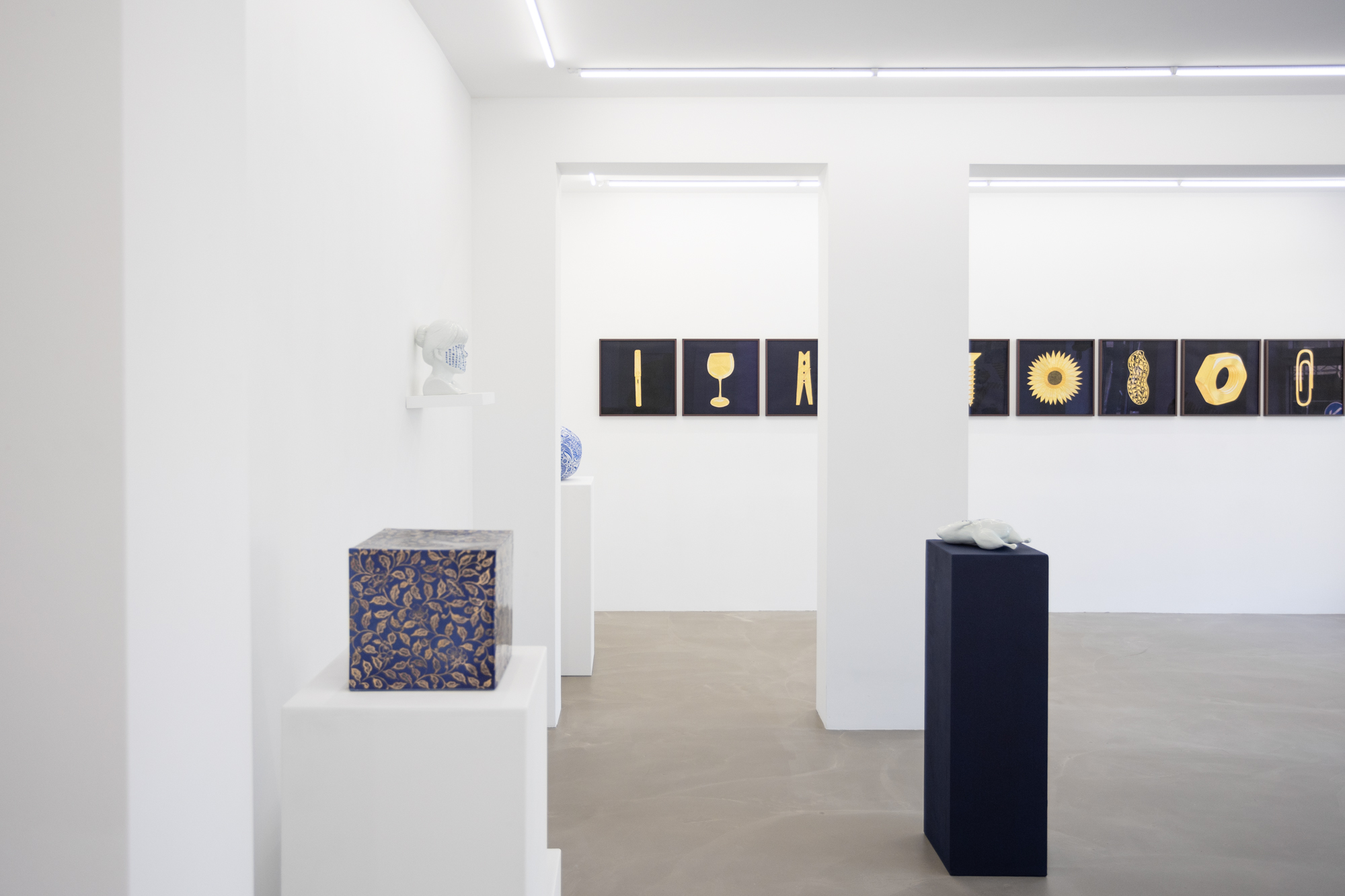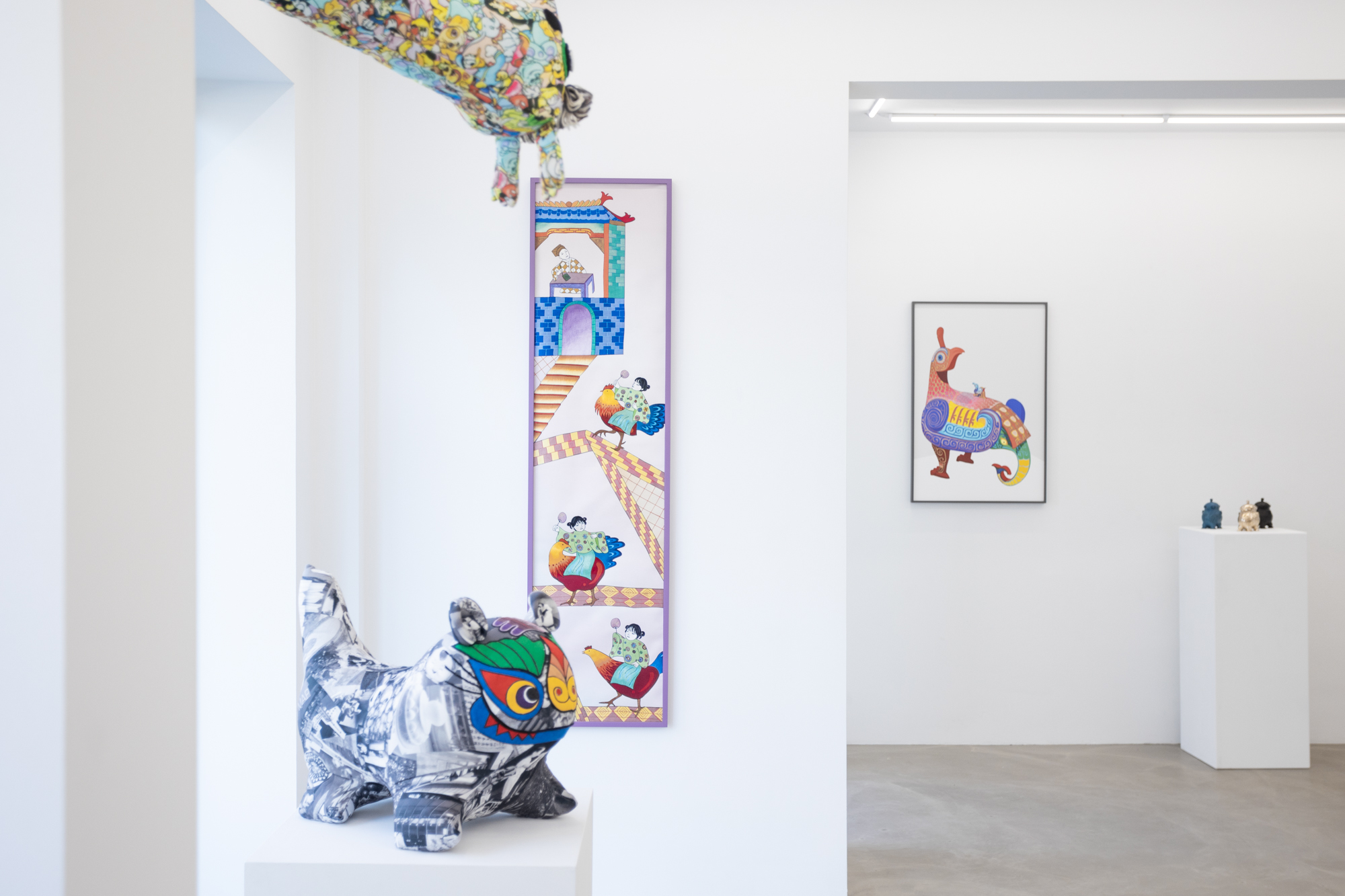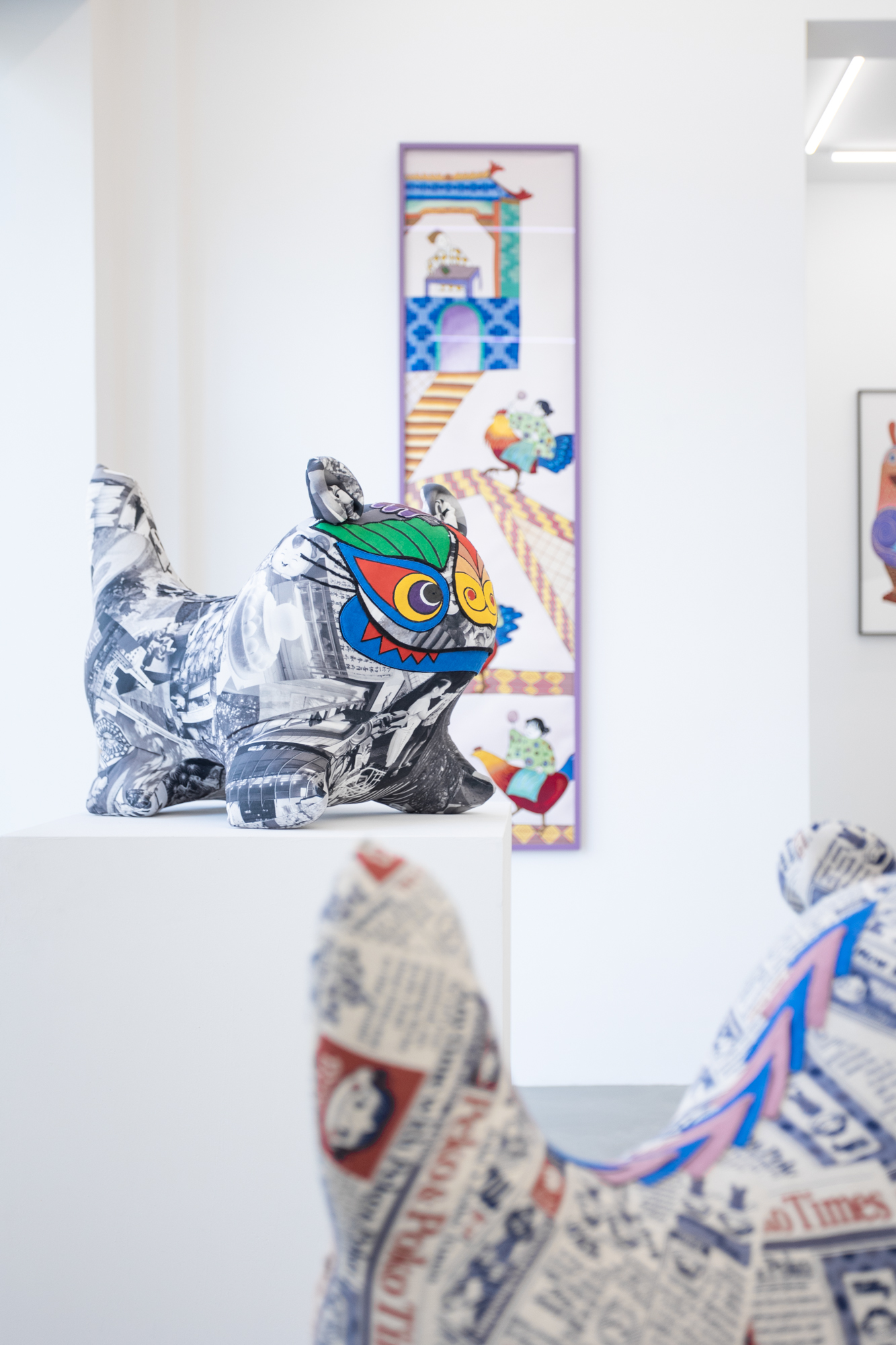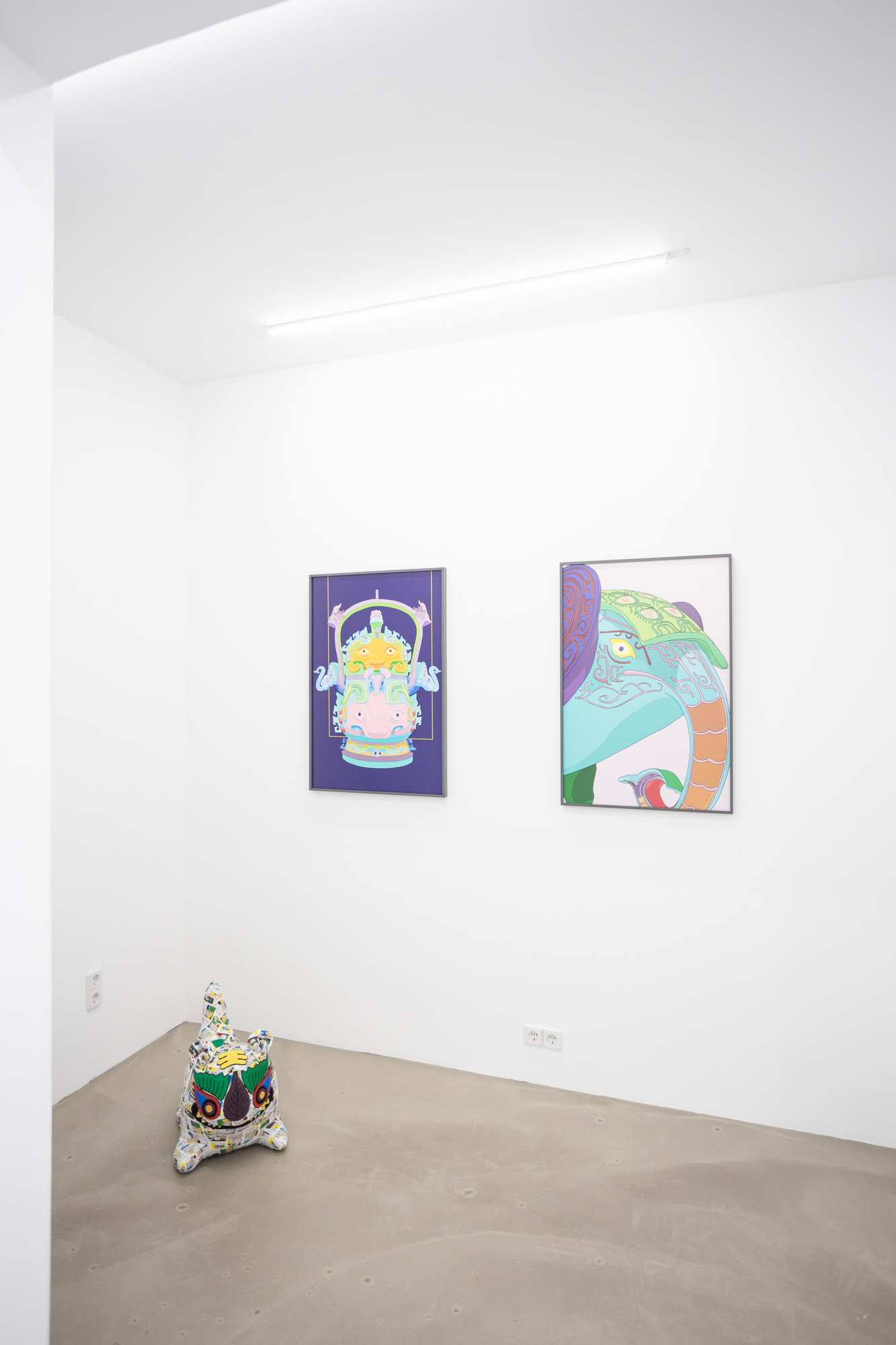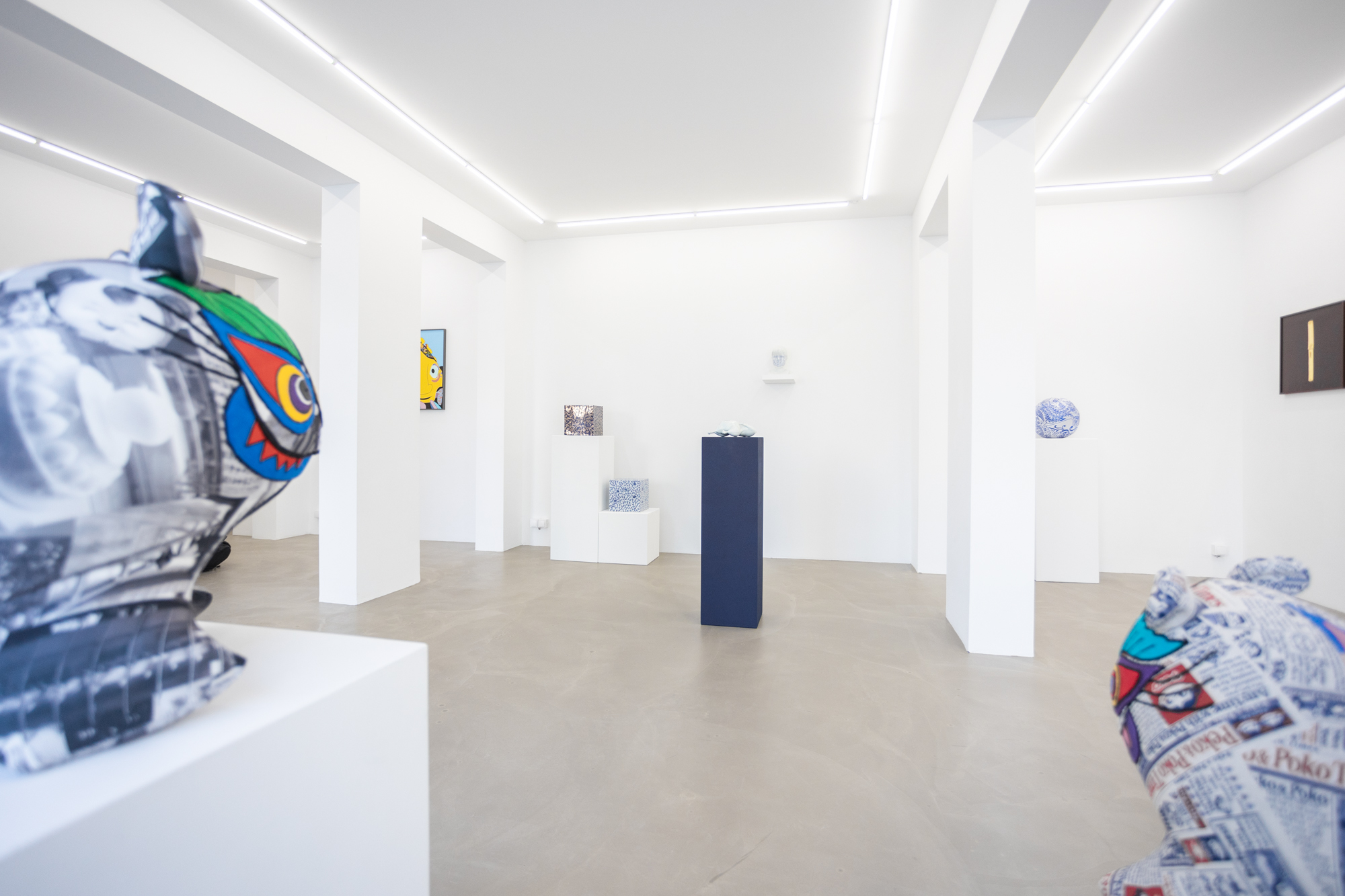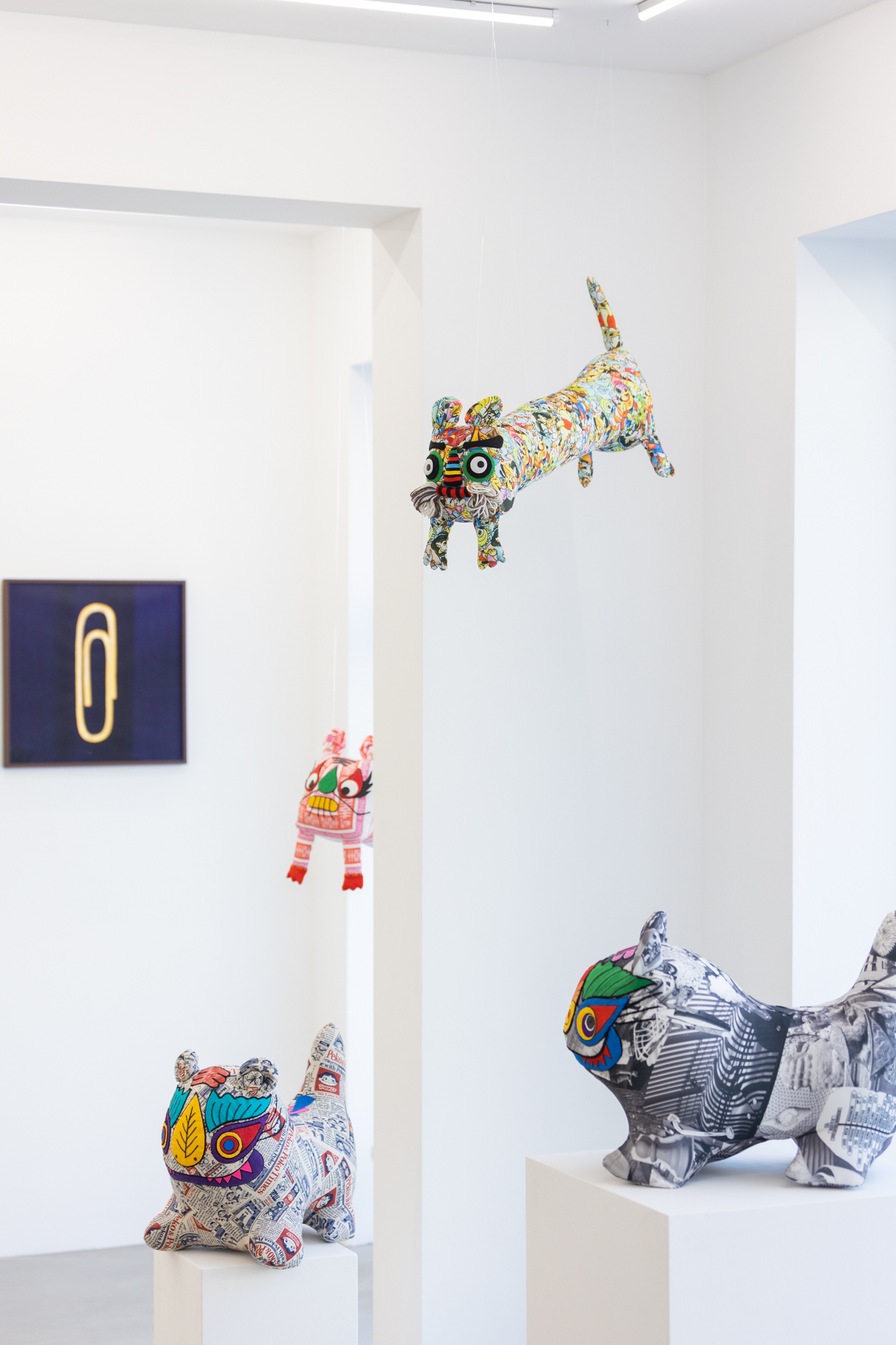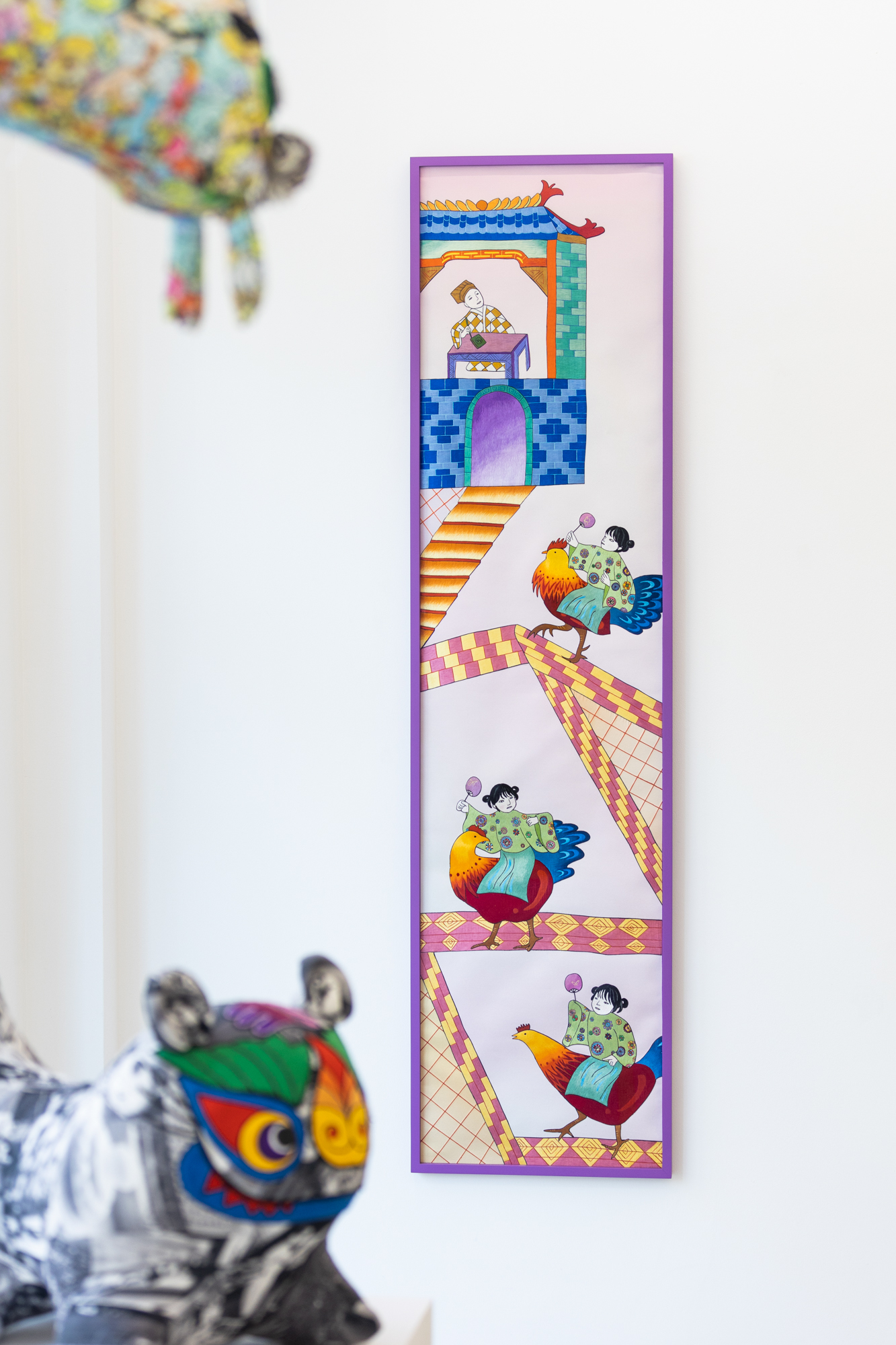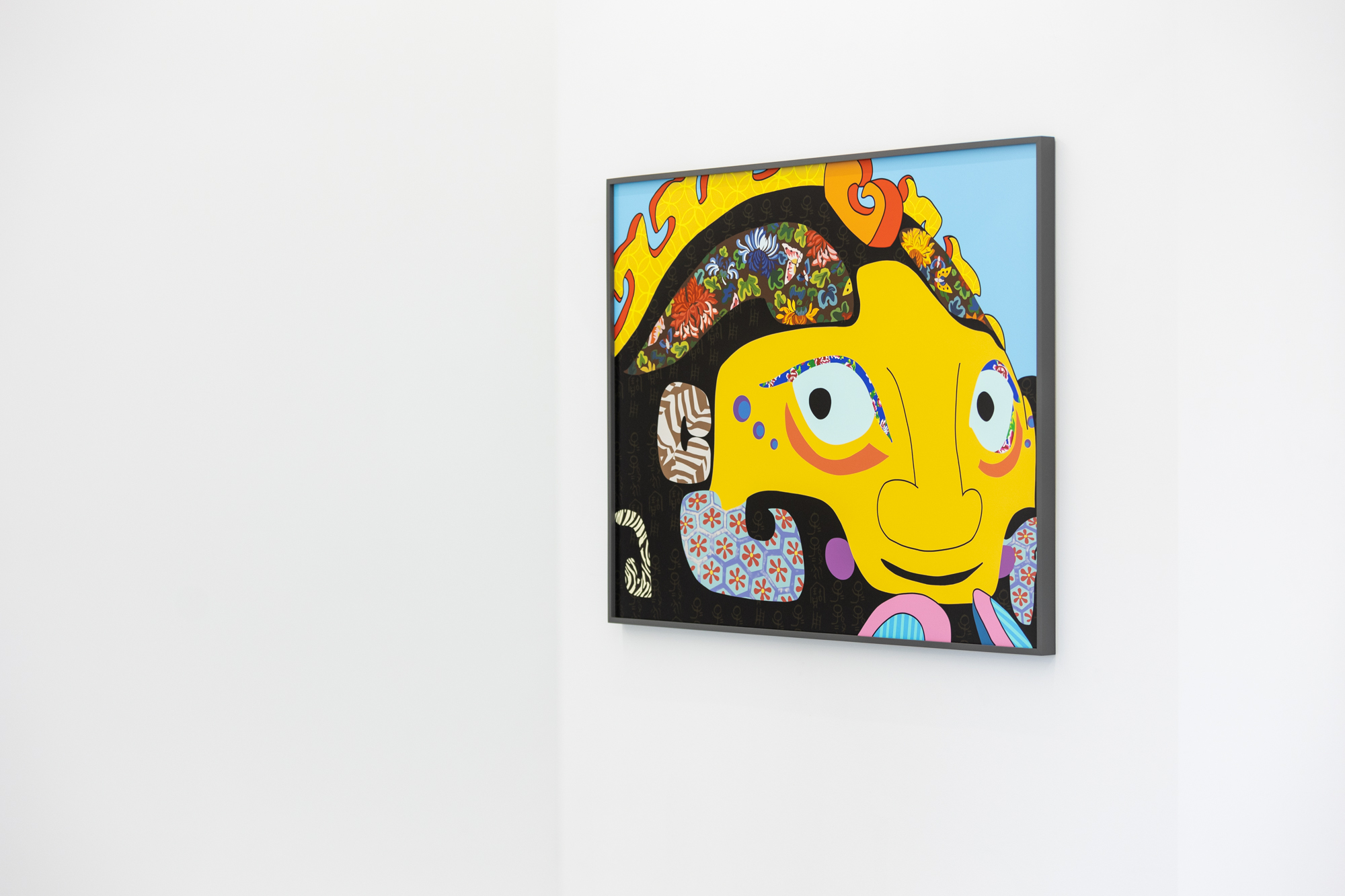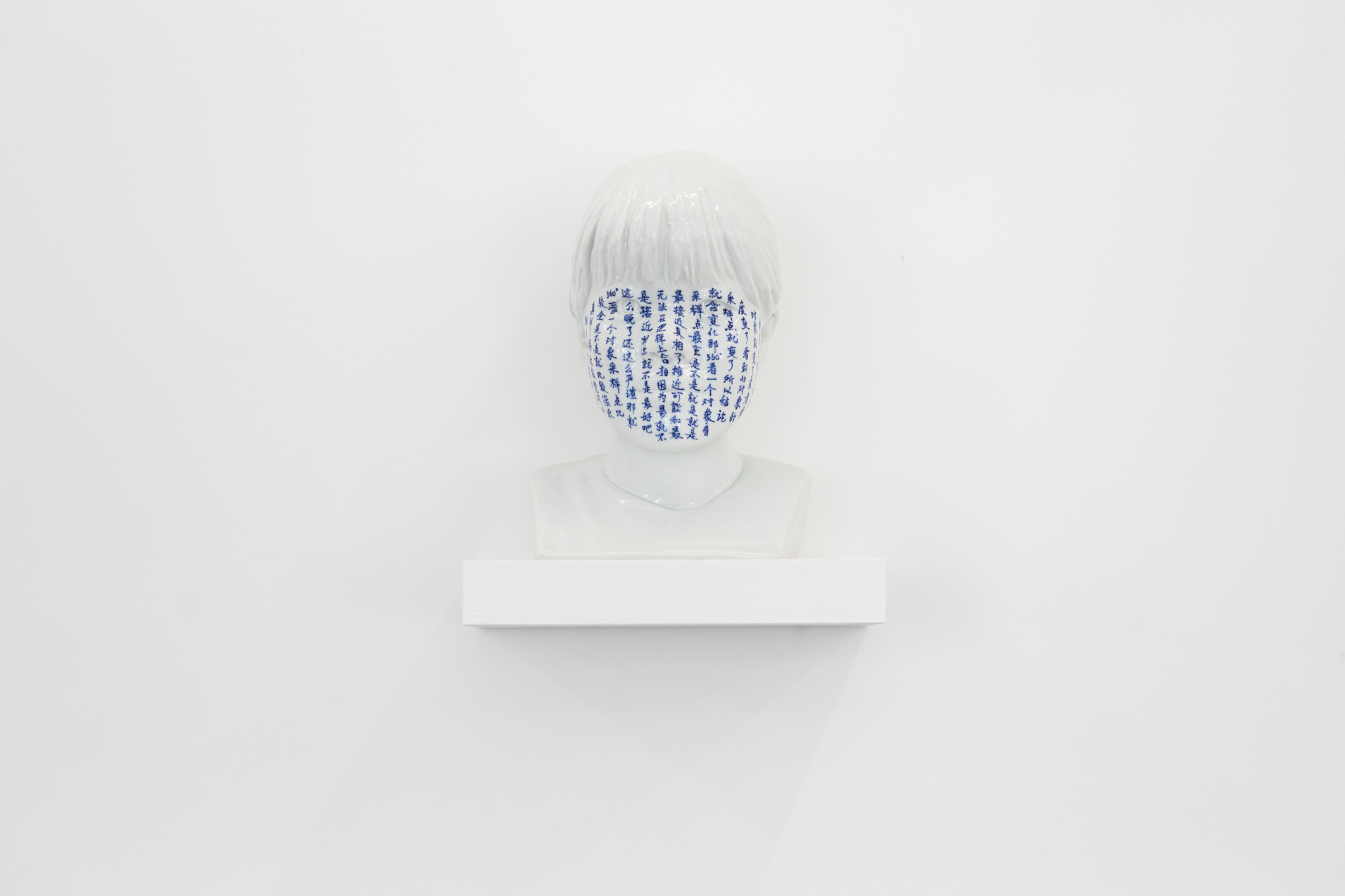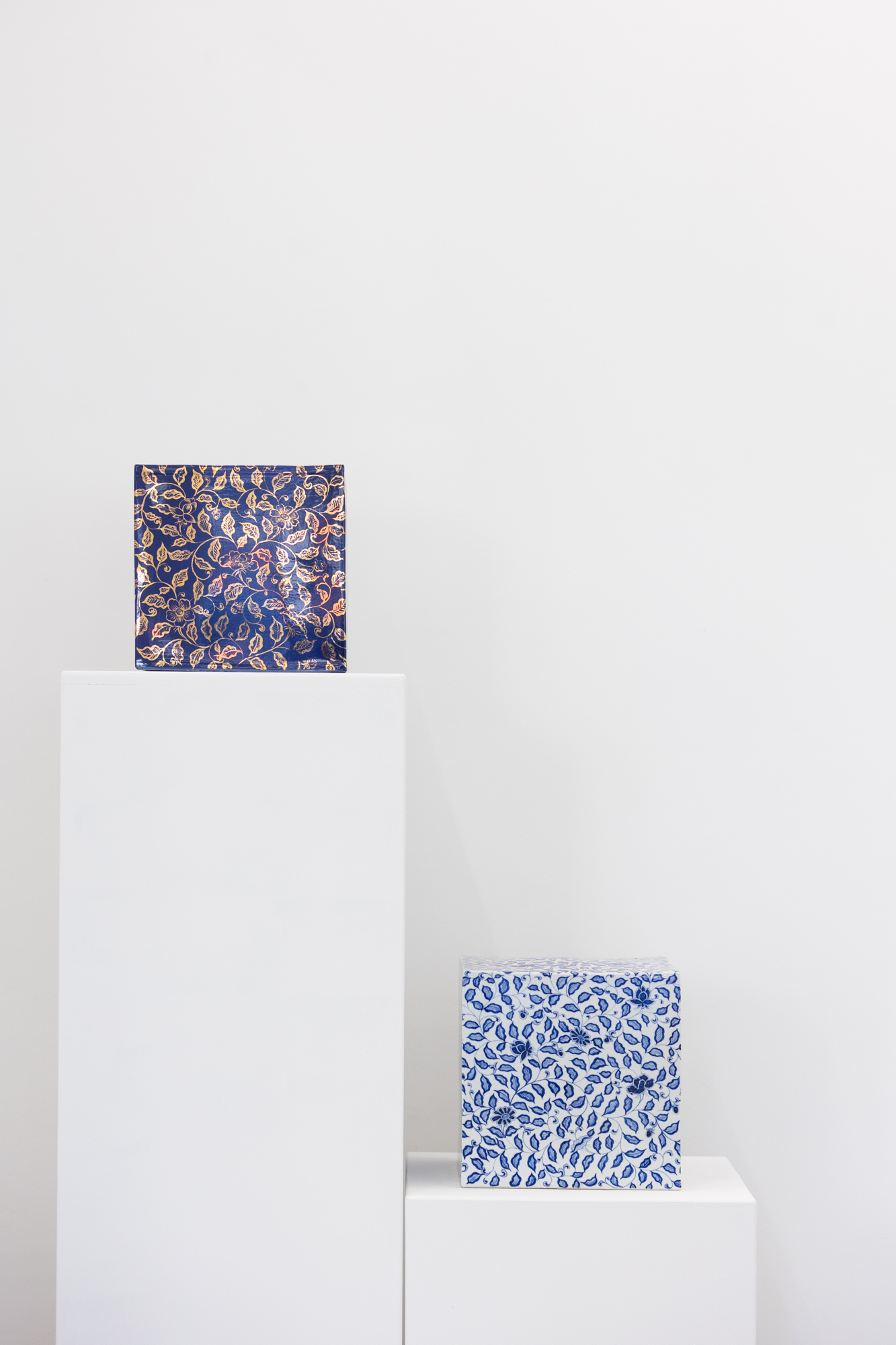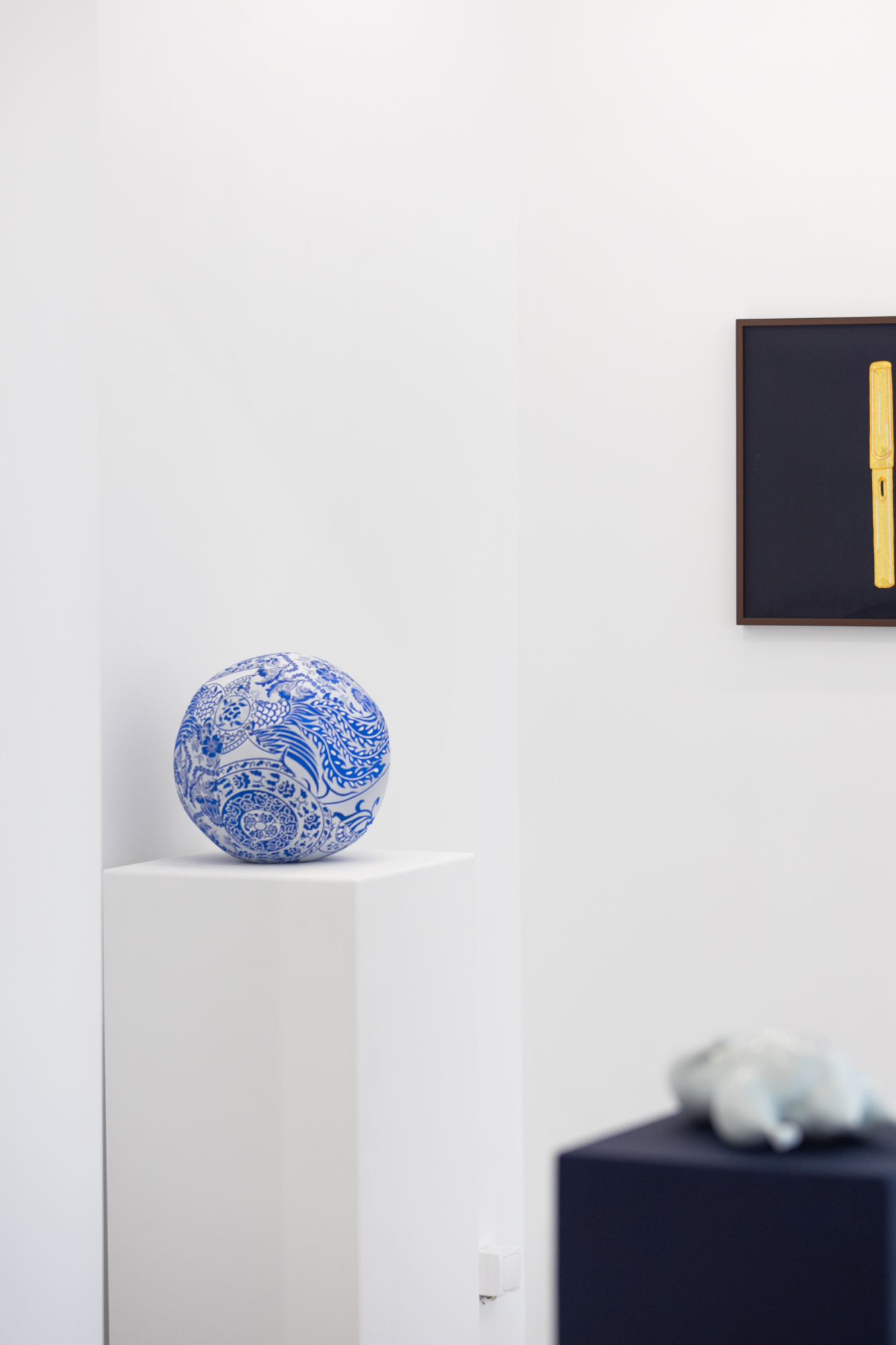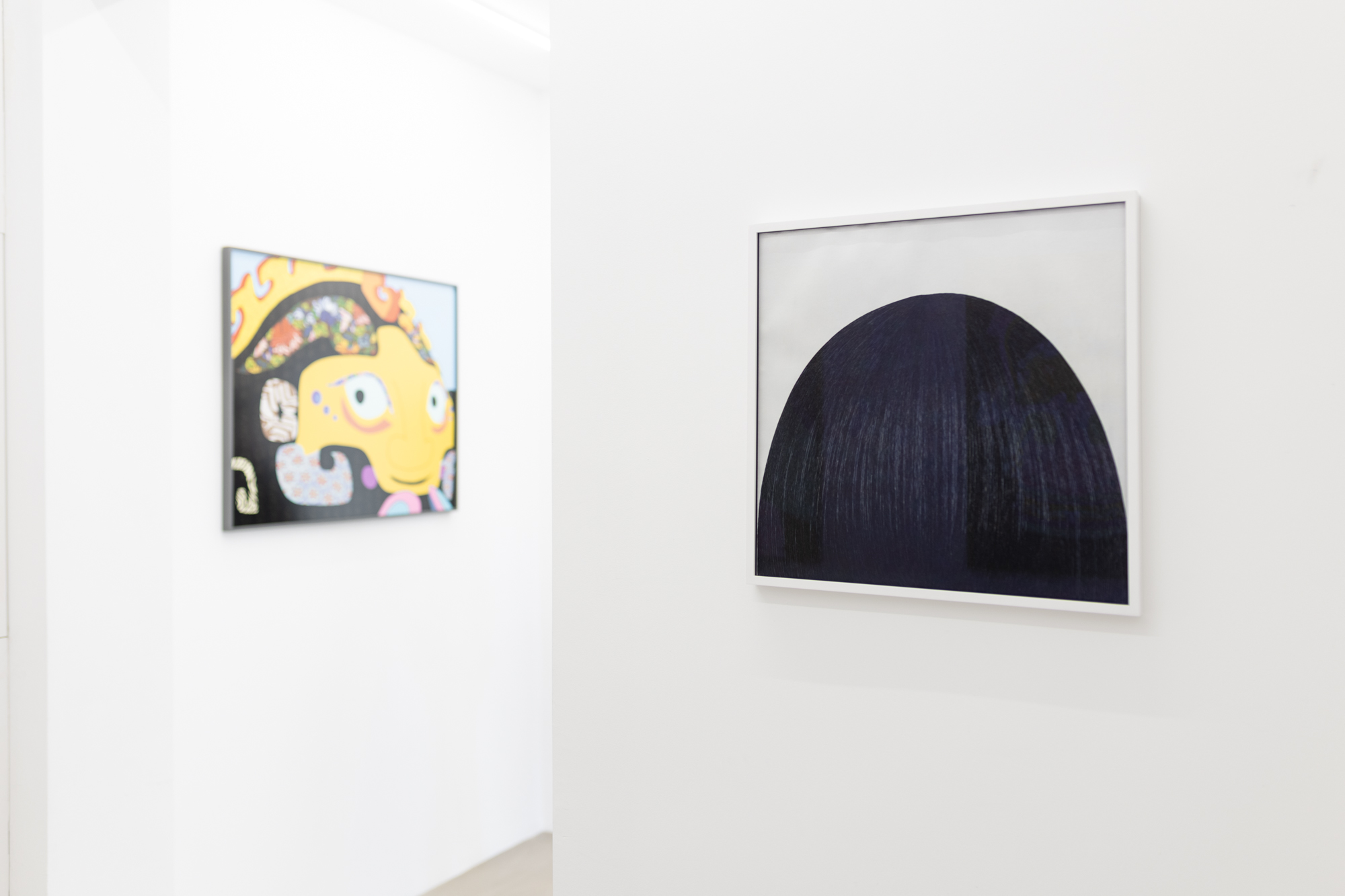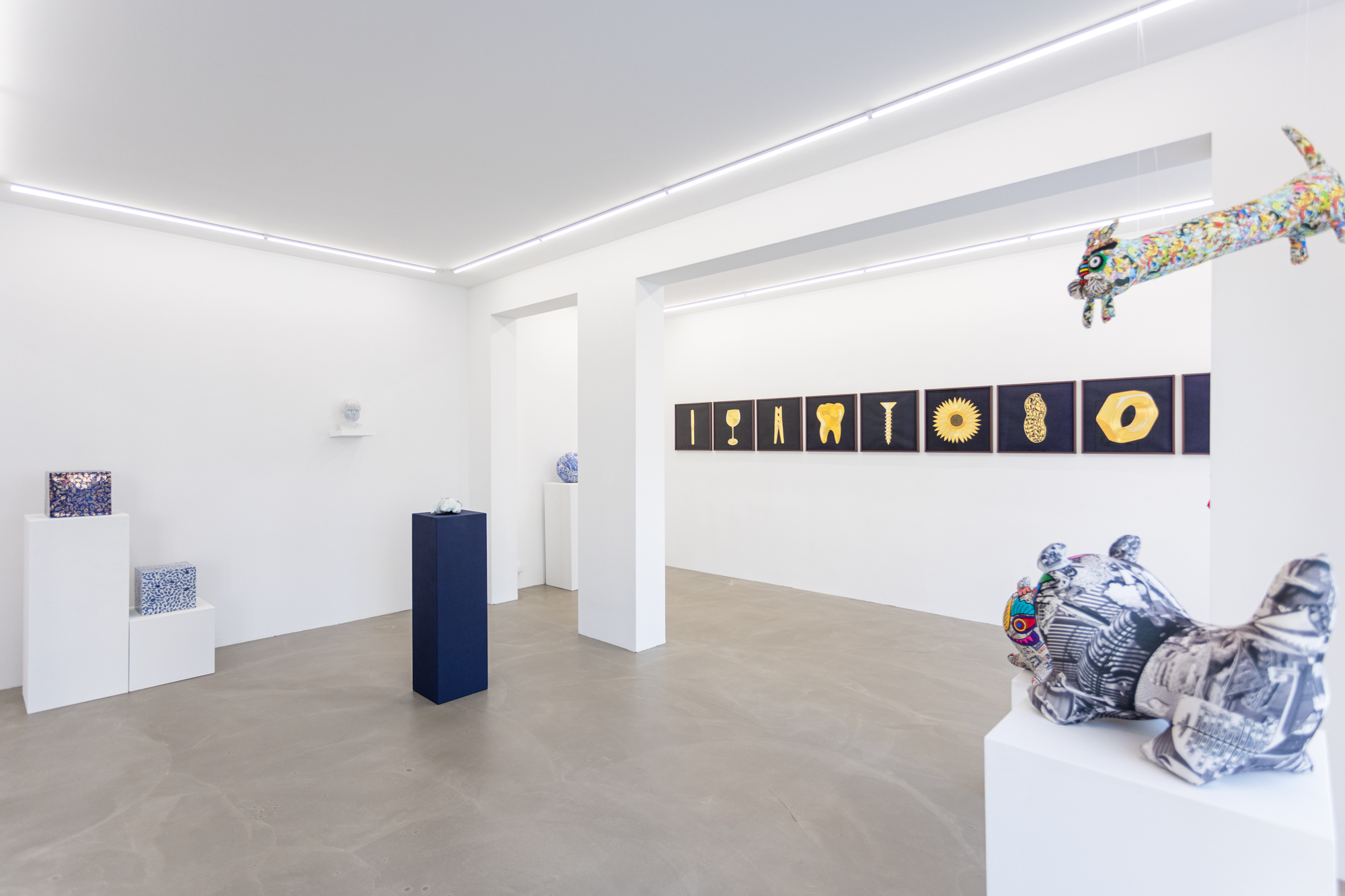June 4 – July 3, 2021
Open
Tue – Sat, 11.00 a.m. – 6.00 p.m.
Opening
Friday, June 4, 2021, 6 p.m. – 9 p.m.
Artist Talk
Friday, June 18, 2021, 6.30 p.m.
Thwarting the ‘Made in China’ mass production mode through her employment of traditional Chinese craftsmanship, artist Ming Lu creates small, valuable editions of contemporary fine art. Her artworks are produced in a variety of media such as porcelain sculptures, embroideries, fine art prints and soft sculptures.
Born and raised in China and studying at The Royal College of Art in London, Ming Lu is now living in Berlin. Ming Lu has won the BBA Artist Prize in 2020 and is a new represented artist of the gallery. She works closely with small workshops in China to bring her ideas to life, humorously employing symbols and figures from myths, legends, prehistorical culture, and from her own biography. Ming Lu’s works reflect her cultural identity, which combines an enduring attachment to China, the country of her birth, to that of a growing relationship with her new home of Europe.
Ming Lu’s metaphorical use of everyday objects is a typical approach for the artist; her works often veer between abstraction and literalness, the familiar and the uncanny, the absurdity and gravity.
The soft sculptures of the ‘Tigress’ series are the artist’s personal interpretation of traditional Chinese tiger pillows that are widely given to babies as a toy, a token of love, a wish for a long life and to protect and guard the child. These pillows are all made by hand, usually by members of the family. Ming Lu’s works to transcend the routine fabric pattern of the toys; the contents of the tigress’ bodies – that have a connection to the artist childhood in the 90’s in China – convey a sense of nostalgia. The artist owned one herself and lost it when she was young.
‘Materialistic life’ is a series of nine embroideries depicting familiar objects. The shapes of the objects are filled with hovering golden threads that reflect light in the directions of the threads, giving the initial flat image plane a three-dimensional illusion. Historically the threads are made with real gold, and are used in decorative figures on Emperors’ clothes such as dragons, a phoenix or other divine animals. The artist adopts the same technique here, portraying industrially produced and everyday items and therefore ironically turns them into objects of luxury.
Ming Lu’s porcelain sculptures play with decorative and meaningful aspects reflecting both everyday and historical culture. Her porcelain cubes turn supportive, decorative patterns into the main characters of the works. The intertwined branches and flowers are commonly meant to represent endless vitality. Her porcelain ducks reference the most popular Chinese dish and her porcelain head reflects the artist’s thoughts and personal conversations.
Drawing on heritage, cross-cultural dynamics and personal reference, the artist creates dense vividly-colored fine art prints that challenge perceptual habits and representation of ritual objects. Mainly focusing on imaginative animals from historical vessels, Ming Lu gives them various layered surfaces including pure color planes, decorative fabric ornaments, freely painted patterns, calligraphy and symbols; playfully transforming the materiality of these once functional yet now ‘functionless’ museum items. Reflecting on the collective memory and the original presentation of power and belief, the traditional visual language combined with the artist’s strong personal expression, varies between powerful and joyful, timeless and contemporary.
The exhibition also includes the artist’s first works with Luodian, originally a decorative handicraft technique with use of various shells in Chinese lacquerware, in her works reflecting post-industrial life. The latest addition to Ming Lu’s creative work is a series of digital artworks called `The young pioneers’ which can be bought and collected as NFT’s on the blockchain.
——————-
The artist Ming Lu counteracts the mass production mode “Made in China” by using traditional Chinese craftsmanship and creates small, valuable editions of contemporary fine art. Her artwork is made in a variety of media such as porcelain sculpture, embroidery, art prints, and soft sculptures.
Born and raised in China, the artist studied at the Royal College of Art in London and now lives in Berlin. Ming Lu won the BBA artist award in 2020 and is a newly represented artist at the gallery. She works closely with small workshops in China to bring her ideas to life. She uses humorous symbols and characters from myths, legends, prehistoric culture and from her own biography. Ming Lu’s works reflect her cultural identity, which combines a permanent bond with China, the land of her birth, with a growing relationship with her new home, Europe.
Ming Lu’s metaphorical use of everyday objects is a typical approach for the artist. Her works often move between abstraction and literality, the familiar and the uncanny, the absurd and the serious.
With her fabric sculptures from the “Tigress” series , the artist interprets the traditional Chinese tiger pillows that babies are often given as toys, symbols of love, combined with the desire for a long life and to protect the child. These pillows are all made by hand, usually by family members. The artist changes the routine fabric pattern of the toys. To do this, she uses print motifs that are related to the childhood of the artists in China in the 1990s. The soft toys become personal and nostalgic objects. The artist actually owned one herself and lost it when she was young.
“Materialistic life” is a series of 9 embroideries depicting familiar objects. The shapes of the objects are filled with floating golden threads that reflect the light in different directions and give the initially flat image plane a three-dimensional illusion. Historically, the threads are made of real gold and are used in decorative figures such as dragons, phoenixes or other divine animals on the clothes of emperors. The artist uses the same technique to depict industrially manufactured and everyday objects, transforming them into luxury objects with an ironic gesture.
The porcelain sculpture of Ming Lu playing with decorative and meaningful aspects that reflect both the everyday and the historical culture. Your porcelain cubes transform supporting, decorative patterns into the main thing in the work. The intertwined branches and flowers represent endless vitality. Her porcelain ducks refer to the most popular Chinese dish with a wink, and her porcelain head reflects the artist’s thoughts and personal conversations.
Based on her cultural heritage, intercultural dynamics and personal references, the artist creates dense, colorful art printswhich call into question the habits of perception and the representation of ritual objects. Ming Lu uses fabulous animals that gave shape to historical, ritual vessels. She gives them layered surfaces, including pure layers of color, decorative fabric ornaments, freely painted patterns, calligraphy and symbols that playfully change the materiality of these once functional and now “functionless” museum objects. The works are powerful and joyful, as timeless as they are contemporary and reflect the collective memory and the original representation of power and belief by combining traditional imagery with the artist’s personal expression.
The exhibition also includes the artist’s first work with Luodian, originally a decorative craft technique using various shells in Chinese lacquerware. The latest addition to Ming Lu’s creative work is a series of digital works of art entitled “The young pioneers” that can be purchased and collected as NFTs on the blockchain.
